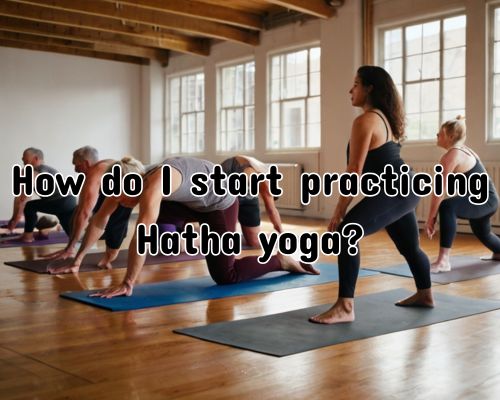How Long Until Yoga Changes Your Body? A Mornington Perspective
If you’re strolling along Mornington’s stunning coastline or sipping a flat white in one of its cozy cafes, you might be wondering: how long until yoga changes your body? Whether you’re a beginner eyeing your first downward dog or a regular yogi seeking deeper transformation, understanding the timeline of yoga’s physical effects is essential. With Bikram Yoga Mornington, let’s unpack the journey from day one to noticeable change, blending scientific insights, local context, and practical tips tailored for Mornington residents.

The Yoga Transformation Timeline: What Science Says
Yoga is more than just a workout—it’s a holistic mind-body practice rooted in ancient traditions. But when it comes to the physical body, the timeline for visible and felt changes depends on several factors: frequency, style, intensity, and individual differences.
- Immediate Benefits (Within a Session): After just one session of yoga—whether it’s a gentle Hatha class at a Mornington studio or a vigorous Vinyasa flow by the beach—you’ll likely feel looser, more relaxed, and maybe even a boost in mood. This is due to increased blood circulation, muscle engagement, and the calming effect of mindful breathing.
- Short-Term Changes (2-4 Weeks): With consistent practice (ideally 3-4 times a week), most beginners in Mornington will start noticing improved flexibility, better posture, and enhanced muscle tone. Research shows that flexibility gains can begin within 2-4 weeks, especially if you incorporate poses targeting tight areas like hamstrings and hips.
- Medium-Term Changes (1-3 Months): By the third month, changes become more apparent. Yoga helps build strength—especially in core muscles, legs, and upper body. You may notice increased muscle definition, reduced chronic pain (common among office workers and retirees in Mornington), and better balance. Body awareness improves, often leading to healthier lifestyle choices.
- Long-Term Changes (6 Months+): After six months or more, yoga practitioners typically experience sustained improvements in body composition, muscular endurance, and joint health. For Mornington locals who embrace yoga as part of their wellness routine, this can mean enhanced athletic performance, reduced injury risk, and a more resilient physique.
Why Mornington Is the Perfect Place to Transform Your Body with Yoga
Mornington, Australia, is a prime spot to start or deepen your yoga journey. Surrounded by nature, with its beautiful beaches, parks, and a strong community focus on health and wellness, Mornington offers both indoor studios and outdoor yoga experiences that amplify the benefits.
- Outdoor Yoga by the Bay: Practicing yoga outdoors in Mornington’s temperate climate boosts vitamin D, encourages fresh air intake, and connects you to nature—key for mental and physical wellness.
- Local Yoga Studios and Classes: Mornington’s thriving wellness scene includes renowned yoga centers like Bikram Yoga Mornington and Soma Yoga, offering diverse classes from beginner to advanced levels, including Iyengar, Ashtanga, and restorative yoga.
- Community and Support: Being part of a local yoga community encourages consistency, accountability, and motivation—critical factors that determine how quickly your body changes.
Key Factors Influencing How Quickly Yoga Changes Your Body
- Consistency is King: The more regularly you practice, the faster your body adapts. Even short daily sessions in your Mornington home or local park can accelerate results.
- Yoga Style Matters: Vigorous styles like Power Yoga or Ashtanga build strength and cardiovascular endurance faster, while slower styles like Yin or Restorative yoga improve flexibility and joint mobility over time.
- Nutrition and Hydration: Mornington’s fresh produce markets and cafes offer nutrient-rich foods to fuel your body’s recovery and muscle building—don’t underestimate the power of diet in your yoga transformation.
- Individual Starting Point: Age, fitness level, and existing conditions all play a role. Mornington’s active retiree population, for example, may experience changes differently than younger athletes.
- Mind-Body Connection: Yoga enhances body awareness, encouraging mindful movement and reducing injury risk, which helps maintain steady progress.
What Changes to Expect and When: A Breakdown
Flexibility
Starts improving: Within 2 weeks
Noticeable changes: 4-6 weeks
Mornington’s coastal walkers often find tight calves and hamstrings—yoga poses like Downward Dog, Pigeon, and Forward Fold target these areas effectively.
Strength
Starts improving: 4 weeks
Noticeable changes: 8-12 weeks
Core-strengthening poses such as Plank and Boat pose build endurance. Many Mornington yogis report improved posture and reduced back pain after consistent practice.
Balance and Coordination
Starts improving: 3-4 weeks
Noticeable changes: 8 weeks+
Balancing poses like Tree and Warrior III enhance proprioception—perfect for the outdoor adventurers of Mornington who hike or cycle.
Weight and Body Composition
Starts improving: 6-8 weeks (with regular practice and healthy eating)
Noticeable changes: 3-6 months
While yoga isn’t always a high-calorie burner, it promotes muscle tone and supports metabolic health. Combining yoga with Mornington’s active lifestyle maximizes these benefits.
How to Maximize Your Yoga Results in Mornington
- Join a Class Near You: Mornington’s studios often offer introductory packages or community classes at Mornington Park or local beaches—perfect for social connection and motivation.
- Set Realistic Goals: Instead of chasing instant transformation, focus on consistency and gradual progress. Track improvements in flexibility, strength, or mood rather than just the mirror.
- Incorporate Mindfulness and Breathwork: Yoga’s power lies in uniting mind and body. Regular pranayama (breathing exercises) practiced at tranquil spots like Mornington Peninsula National Park boosts relaxation and recovery.
- Stay Hydrated and Nourished: Mornington’s seaside climate demands good hydration. Visit local farmers markets for fresh veggies and protein-rich options to complement your yoga practice.
- Cross-Train: Engage in other activities like swimming or walking along Mornington’s foreshore to support overall fitness and accelerate yoga results.
Real-Life Mornington Stories: Yoga Changing Bodies and Lives
Take Sarah, a 42-year-old Mornington mother who started yoga to manage chronic back pain. Within a month, consistent yoga practice reduced her pain and improved mobility, allowing her to return to kayaking on the bay. Or Mark, a retiree who embraced yoga at his local studio; over six months, he gained strength and balance, helping him stay independent and active.
Final Thoughts: Patience and Persistence Win the Yoga Game
So, how long until yoga changes your body? The short answer: it depends—but with consistent practice, many Mornington residents start feeling meaningful changes within 4 to 6 weeks, with deeper physical transformations unfolding over months.
Yoga is a lifelong journey, not a quick fix. Mornington’s vibrant health community and natural surroundings provide the perfect backdrop for this transformation. Whether you’re seeking flexibility, strength, or a more mindful lifestyle, yoga offers a powerful path to reshaping not just your body but your entire wellbeing.
Local Resources for Yoga in Mornington, Australia
- The Yoga Room Mornington: Offering Hatha, Vinyasa, and Restorative classes suitable for all levels.
- Soma Yoga: Known for expert teachers and community-focused workshops.
- Mornington Peninsula National Park: Ideal for outdoor yoga sessions and meditation.
- Mornington Farmers Market: Fuel your body with fresh, local produce to support your practice.


